Grow onions
There is an allium for every taste and something for every size of garden or pot.
Onions
Onions (Allium cepa) need cooler temperatures in the seedling stage then warm dry conditions once bulbs start to form. Hence their traditional autumn or early winter planting time for summer harvest.
Onions need a generous supply of nutrients. A few weeks prior to planting, dig in blood and bone or well-rotted manure. Feed them regularly, every few weeks, to encourage strong healthy growth. Fish fertiliser is ideal.
Seeds can be sown directly into the garden soil and then thinned to 10cm spacings (the thinned out seedlings can be eaten like chives). Otherwise, to cut down on weeding, sow in trays of seed raising mix and transplant the young plants into the garden when they’re about 10cm tall (or simply buy seedlings in punnets from the garden centre).
When onion leaves wilt and fall over it’s harvest time. After lifting, leave them in a warm sunny spot to dry out before storing in wire baskets or mesh bags in a cool, dry spot.
Sweet red onions can be grown and harvested alongside golden onions, although they don’t have quite the storage life of the classic Kiwi favourite, Pukekohe Longkeeper, which can be stored for up to 10 months. Interesting heirloom onion, Rossa Lunga is a traditional favourite in Italy and France and fun to grow. These visually striking, long red onions have a mild, sweet flavour.
Garlic
Planting garlic on the shortest day and harvesting on the longest is a well heeled tradition. These days however, many gardeners are planting earlier in an attempt to avoid the debilitating rust disease, which strikes in warm weather.
To grow garlic, first prepare a sunny spot with well-drained soil enriched with organic matter. Purchase locally grown garlic bulbs as soon as they come available in garden centres. Separate the bulbs into cloves, discarding any damaged ones. The fat, outside cloves are best for planting.
Shallots
Subtle and sweet, shallots offer a delicate onion flavour that’s lovely in sauces or roasted with chicken. These mini onions can be grown from seed or from cloves, planted in the same way as garlic, 15-20cm apart into well-prepared soil so that their tops are just level with the soil surface. Harvest the bulbs in summer, keeping the smallest cloves for replanting.
Leeks
In warm climates leeks are ideally planted in autumn. In colder climates spring planting is best. They are faster growing than regular onions and can be eaten when still not fully grown. For full maturity, allow six months from sowing. Feed leeks with high-nitrogen fertiliser as they grow.
Spring onions
Spring onions (aka bunching onions) are easy to grow for a constant, year round supply of fresh onion flavour that’s useful in a wide range of dishes, cooked or raw. Seedlings are available most of the year, or grow them from seed sown directly into well-drained soil in autumn and spring. They’re easy to grow in pots.
Chives
Chives are clumping perennials that grow all year round. In cold climates the leaves will die back in winter but return in spring. Grow chives from seed or buy seedlings in punnets. Alternatively, you can start new plants by dividing larger clumps. Provided they are kept moist, chives are easy to grow in pots.
Chives’ colourful pompom flowers make a pretty border and are attractive to bees, although their appearance does mark a decline in the flavour of the leaves.
Interesting…
Allicin, the compound that gives garlic its famous odour, is also responsible for inhibiting bacteria in the human body, as well as pesky bugs in the garden. Allicin is formed when garlic is chopped or crushed. It is damaged with cooking which is why garlic is healthiest when eaten raw.

1-Mar-2025
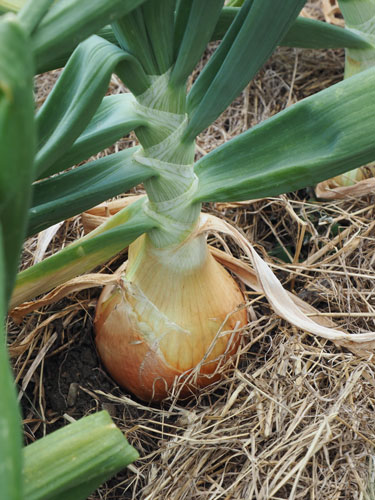
Onion 'Pukekohe Longkeeper'
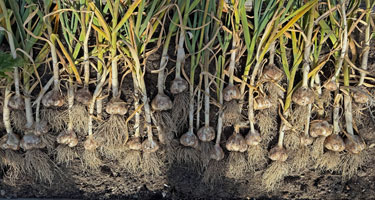
Garlic, freshly dug and laid out to dry
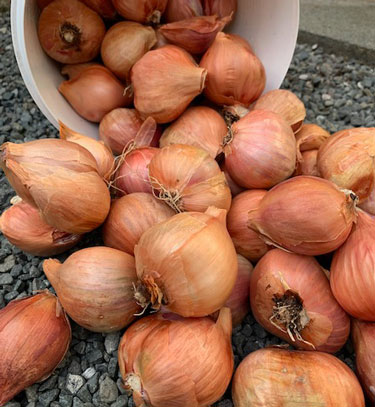
Shallots
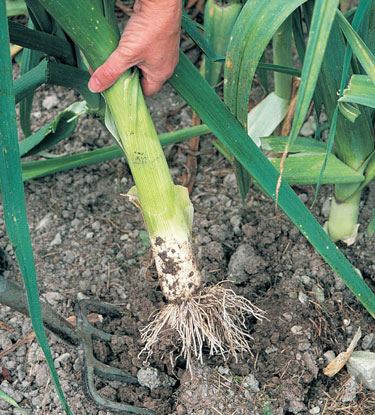
Leeks
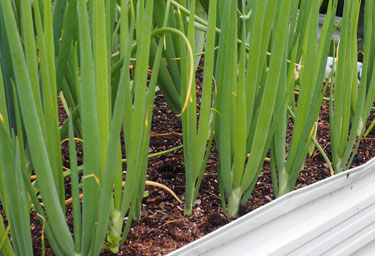
Spring onions
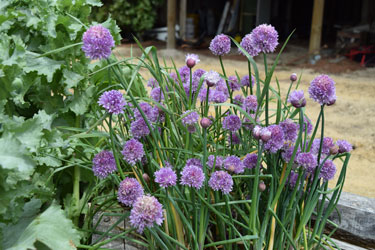
Chives

